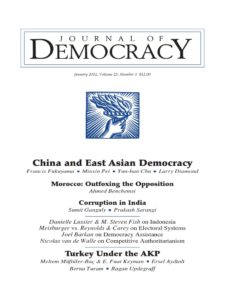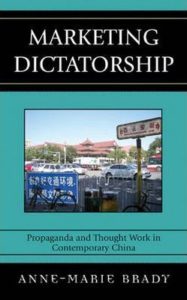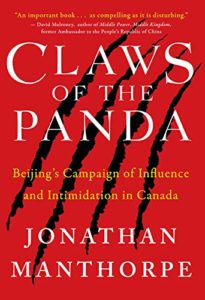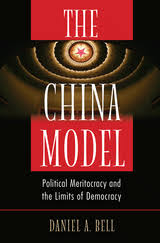Partidos políticos e financiamento eleitoral no Brasil
Paulo Roberto de Almeida
[Objetivo: respostas a questionário;
finalidade: participação em pesquisa]
Recebi, de [um pesquisador], pequeno questionário destinado a subsidiar pesquisa que ele
conduz sobre sistemas de financiamento político e eleitoral. Eis minhas
respostas.
1 . No contexto
democrático, qual é o papel dos partidos políticos?
Representar “partes” da opinião pública, ou
frações de setores sociais e grupos determinados da sociedade, até talvez o
conjunto da sociedade (embora seja difícil atender a interesses
contraditórios), junto às instituições políticas de natureza governamental.
Partidos são intermediários entre desejos, demandas, requerimentos da sociedade
– mais frequentemente partes dela, daí o nome de “partidos”, ou seja, partes de
um todo – e as instituições de governança, no legislativo, em primeiro lugar,
no comando do executivo naturalmente, e eventualmente também junto a órgãos do
judiciário, no caso de mecanismos de solução de controvérsias.
Partidos são elementos essenciais nas
democracias modernas, que são todas, ou quase todas, representativas. O jogo
democrático legítimo prevê a organização de consultas eleitorais regulares, visando
à alternância dos partidos no exercício do poder, segundo procedimentos
acordados consensualmente pela sociedade, através de uma assembleia
constituinte e seus ordenamentos constitucionais.
2. Você seria
favorável a um sistema de financiamento (partidos e campanhas) totalmente
privado (doações empresariais e de pessoas físicas)?
Não se trata de ser favorável: sou, em primeiro
lugar, inteiramente contrário a qualquer outro sistema, e, portanto, a favor de
uma proibição formal de financiamento público de campanhas e dos partidos.
Partidos são entes de direito privado – pois que representando apenas partes da
opinião pública –e devem, dessa forma, ser financiados exclusivamente por seus
membros, militantes, simpatizantes, apoiadores. Sou, portanto, pela liberdade
absoluta de financiamento privado das campanhas. Mas, como os partidos são
entidades de direito privado exercendo missões públicas, de caráter cívico, sou
a favor de total transparência nos mecanismos e dados reais sobre esse tipo de financiamento:
tudo o que o partido receber deve estar à disposição de todas as autoridades de
organização dos escrutínios eleitorais, assim como da sociedade em geral.
Repito: total liberdade. Existe o risco de partidos serem capturados por
grandes interesses econômicos? Claro que existe, mas isso vai se saber
imediatamente, e a sociedade terá perfeita informação e consciência desse
apoio. Fraudes, omissões e sub-declarações quanto ao financiamento obtido
deveriam ser sancionados severamente, implicando, por exemplo, na vedação da
participação dos candidatos do partido fraudador em um ou dois escrutínios
eleitorais seguidos.
3. Como a prestação de
contas do dinheiro público transferido para os partidos políticos pode ser
aperfeiçoada?
Sou absolutamente contrário a qualquer forma de
financiamento público. O financiamento privado deve ser registrado na página de
cada partido, sem sequer a obrigação de remeter à autoridade eleitoral, que
procederá eventualmente a conferência por amostragem das contas dos partidos,
podendo inquirir por dados mais completos.
4. Você seria
favorável a um sistema de financiamento 100% público de campanhas e partidos
políticos?
De nenhuma forma, e não aceito o argumento de
que esse financiamento público é o preço da democracia. Partidos investem os
recursos de seus apoiadores em campanhas políticas, para eleger representantes
que, eles sim, receberão um salário condigno para tal tarefa de representação,
mas se qualquer tipo de mordomia.
5. Você é favorável ao
teto de gastos de campanha?
Não; como liberal, acredito que cada partido
deve investir o que seus apoiadores desejarem na eleição de seus candidatos.
Alguns serão eleitos com muito dinheiro, outros com um mínimo. E serão ambos
exatamente iguais na representação congressual ou nos cargos executivos,
devendo desempenhar seus mandatos de acordo a dispositivos constitucionais.
6. Qual é sua
perspectiva acerca do atual paradigma de financiamento dos partidos políticos
brasileiros?
Sistema totalmente irresponsável, perdulário,
inaceitável, escandaloso e vergonhoso, do ponto de vista dos eleitores (que não
deveriam ser compulsórios, e sim voluntários) e dos contribuintes (também
compulsórios) que já pagam os salários de seus representantes e dirigentes. Os
fundos eleitoral – uma excrescência inaceitável – e partidário devem ser
extintos completamente, imediatamente, por antidemocráticos. A questão é muito
simples: como um eleitor liberal, ou conservador pode apoiar, sem o seu
consentimento, um partido que prega o fim da propriedade privada? E como um
eleitor esquerdista, igualitarista radical, pode sustentar candidatos
conservadores e partidários de uma economia de mercado totalmente livre?
Injusto para ambos.
7. Qual é o modelo
mais adequado de financiamento dos partidos políticos brasileiros?
Já
explicitado acima: totalmente a cargo, exclusivamente sob responsabilidade de
seus membros e simpatizantes. Qualquer outra forma é antidemocrática e autoritária.
Paulo Roberto de Almeida
Brasília, 25 de fevereiro de 2019
 “The most important cause of their pessimism is bad policy and bad leadership,” said Minxin Pei, a professor at Claremont McKenna College [and contributor to the NED’s
“The most important cause of their pessimism is bad policy and bad leadership,” said Minxin Pei, a professor at Claremont McKenna College [and contributor to the NED’s There is
There is  The group seems to have “all the hallmarks” of a front organization to further Beijing’s interests,
The group seems to have “all the hallmarks” of a front organization to further Beijing’s interests, Increasing Chinese leadership in the Middle East is served by a
Increasing Chinese leadership in the Middle East is served by a 